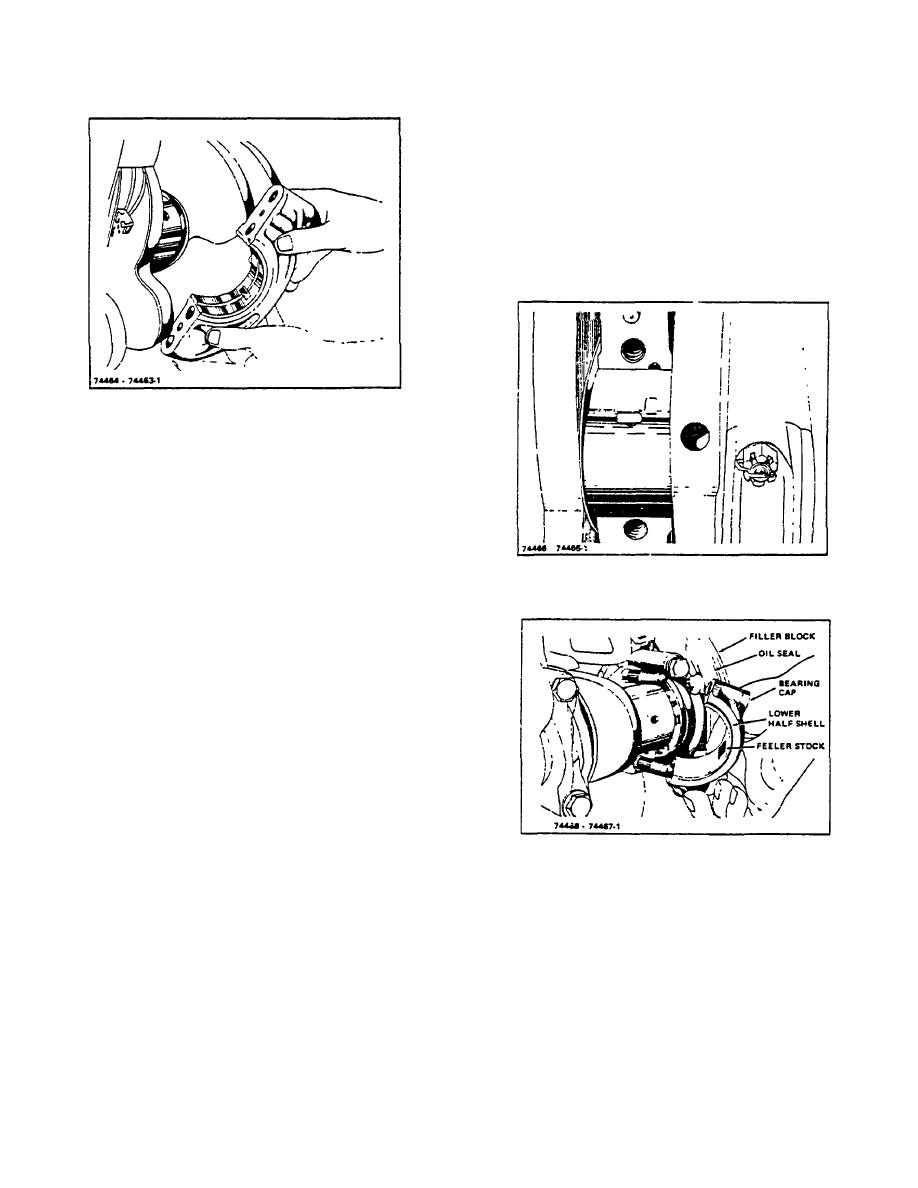 |
|||
|
|
|||
|
Page Title:
Figure 6-11. Checking Bearing Clearance with Feeler Stock |
|
||
| ||||||||||
|
|
 TM 10-3930-644-14&P
bearing bolts are tightened and attempting to move
the rod from side to side in the direction of end
clearance. If the crank pin is not worn. a well-fit
bearing is usually just loose enough to be "snapped"
from side to side, without actually feeling so loose as
to push easily. Sometimes a slightly snug bearing will
not move under pressure but will move readily under
light blows from a soft-faced hammer. This condition
is usually considered satisfactory, providing the
engine is given adequate break-in time.
Figure 6-11. Checking Bearing Clearance with Feeler
Stock
no more in thickness than, the maximum clearance
specified, neither the crankshaft nor the bearing is
worn excessively as far as clearance is concerned.
When using new bearings with a crankshaft that is
not worn, checking may be done with a piece of feeler
stock as outlined above. This should lock up the
Figure 6-12. Replacing Bearing
crankshaft, making it possible to turn only by use of a
bar or wrench.
Generally, the test on main bearings consists of
tightening each bearing cap in turn, and turning the
crankshaft to detect binding.
It is emphasized that any unusual bending or run-nut
in a crankshaft makes it impossible to fit bearings
accurately. For this reason, the time spent in making
a run-out check is well worth while.
Magnetic
inspection of the crankshaft and other stressed parts
is also recommended if the proper equipment is
available.
Connecting rod bearings and crank pins may be
Figure 6-13. Checking Connecting Rod Bearing with
checked in the same manner as main bearings with
one exception: do not try to turn the crankshaft when
Feeler Stock
the connecting rod bearing is tightened on it with a
piece of feeler gauge assembled; rather, try to move
3. Bearing Installation
the connecting rod from side to side (Figures 6-12
and 6-13).
NOTE
Coat all running surfaces with clean,
The familiar test of connecting rod bearing clearance
fresh engine oil when installing
consists of manually gripping the rod cap after the
bearings.
R-104-1
3-20
|
|
Privacy Statement - Press Release - Copyright Information. - Contact Us |